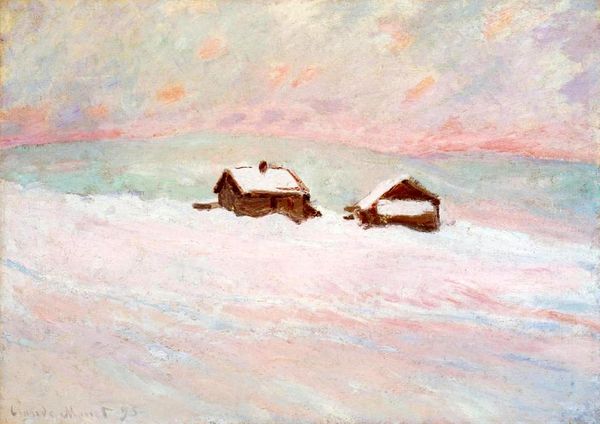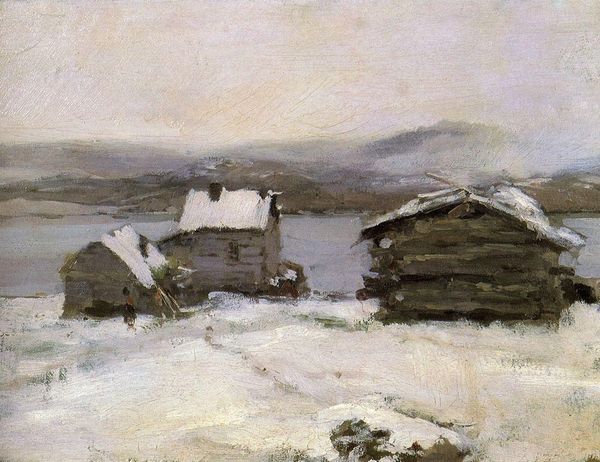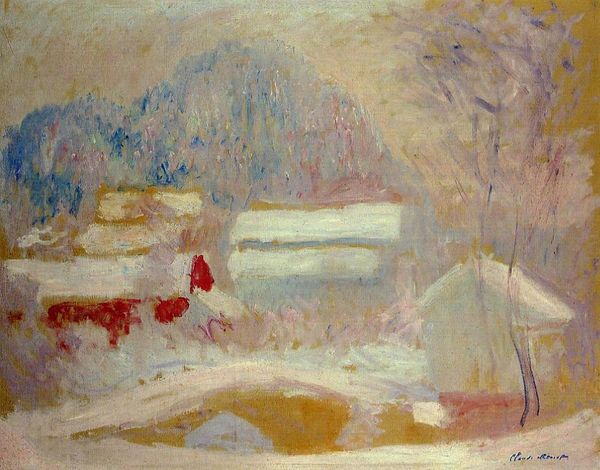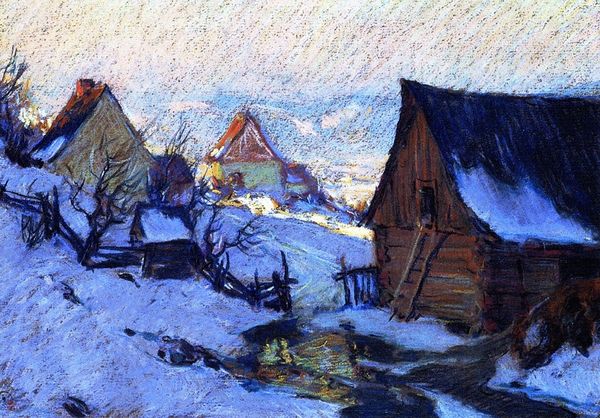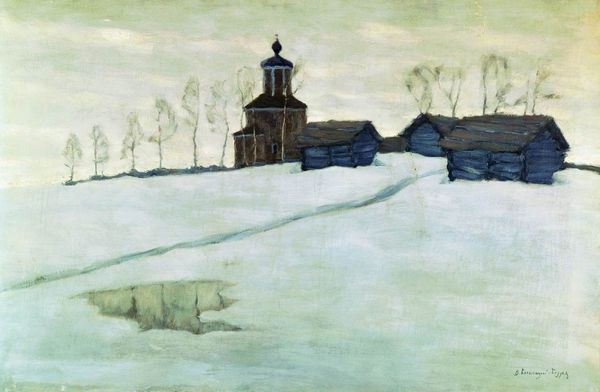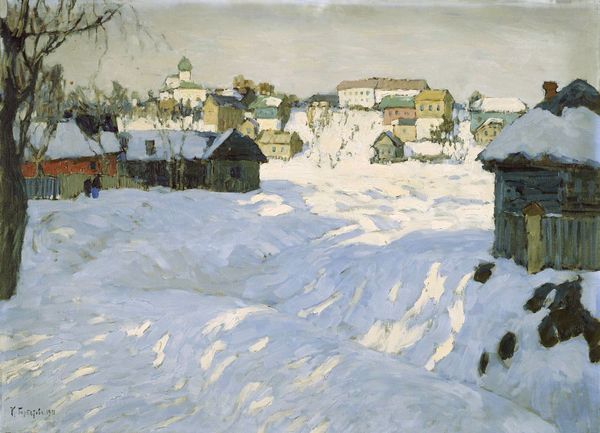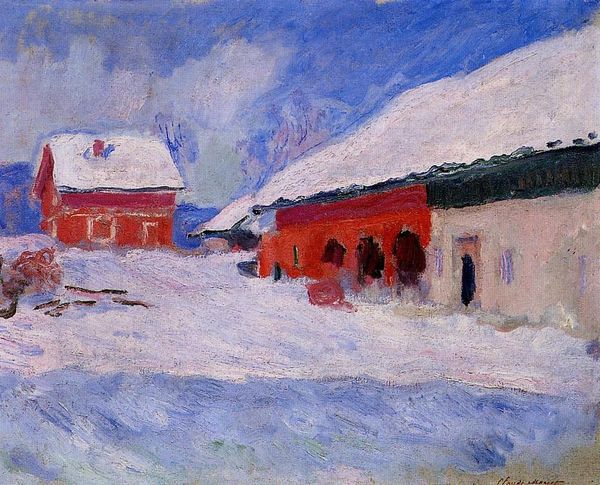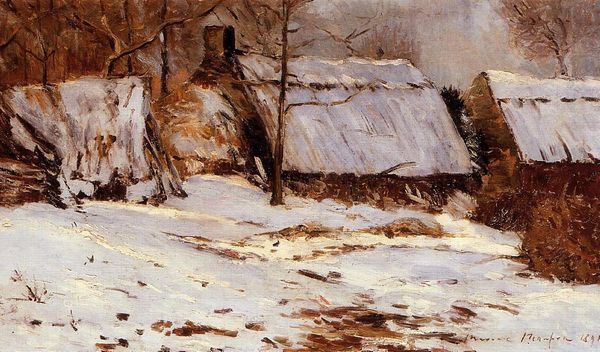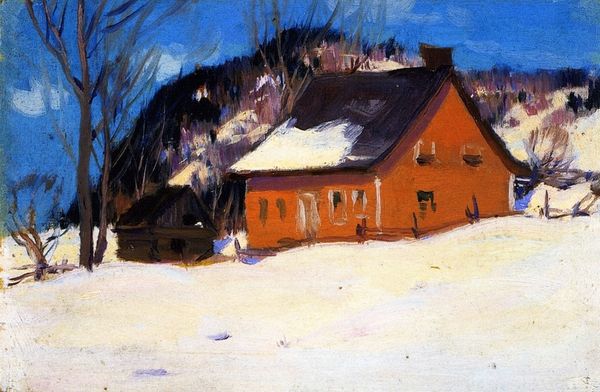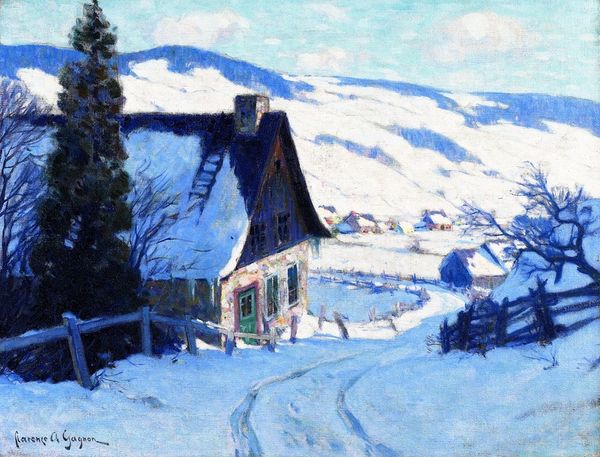
Copyright: Public domain
Curator: Before us hangs Claude Monet's "Houses in the Snow," painted in 1895 using oil on canvas. It is quite an intriguing piece from his body of work. Editor: I must say, its immediate effect is rather disquieting, no? The starkness of the white and the shadowed structures create a somber mood. Curator: Indeed, but look closer. Observe the brushstrokes – the deliberate application of paint creating texture that almost mimics the very surface of snow. Note the structure of the house and roof against the surrounding. Editor: That's true. You can almost feel the cold seeping through the canvas. But I'm struck by the physical labour involved in creating such an impasto effect. Consider the hours Monet dedicated to layering the paint to build form on what can seem to be quite featureless landscape. Curator: And there's a subtle beauty in that form, a structural harmony in the relationship between the horizontal ground plane and the simple geometric shapes of the houses. Semiotically, they become almost abstract markers, anchored in the landscape. Editor: Precisely! This evokes questions of resource expenditure, both monetarily in terms of the volume of paint used and in a more bodily way with repetitive movements across a protracted painting process, raising fundamental considerations of the labor, material, and commodity concerning Monet's wider artistic practice. Curator: His dedication to painting en plein air, particularly in these harsh conditions, emphasizes this relationship and underscores the painting's commitment to direct sensory experience. The artwork becomes more than a painting; it embodies time, place, and a perception— frozen by winter, interpreted via artistry. Editor: Right, and considering the context of impressionism— how revolutionary this approach was. Abandoning precise details for sensory impressions— what about the supply chains? The pigments would have come from global sources via industrial processing; the canvases from specialized mills. The infrastructure enabling his impression. Curator: Your analysis broadens our perception beyond the aesthetics, connecting us to the realities behind artistic creation. Editor: And, after analyzing the materiality, the emotional bleakness translates, for me at least, from an art piece, to a meditation of production. A poignant paradox in simplicity.
Comments
No comments
Be the first to comment and join the conversation on the ultimate creative platform.
